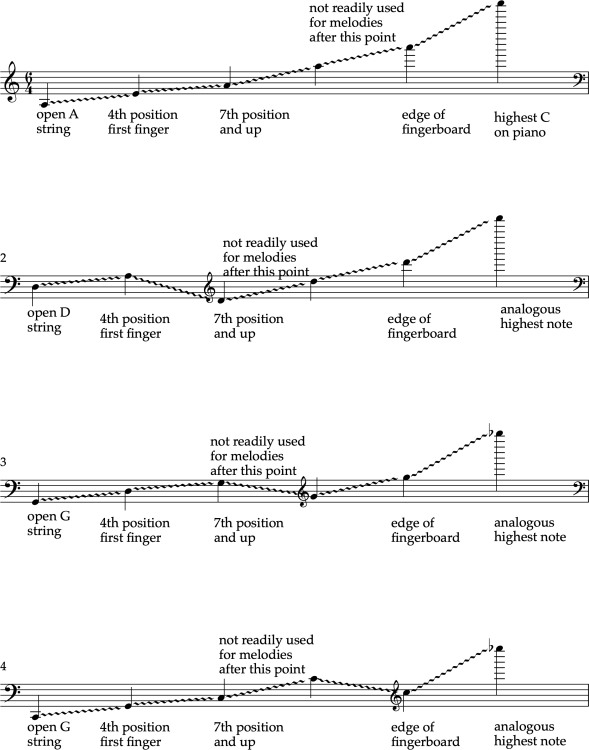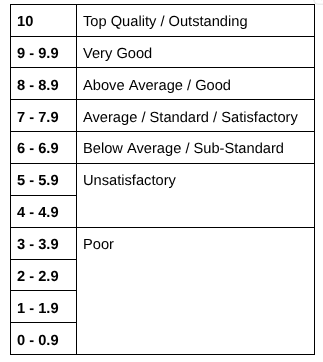Leaderboard
Popular Content
Showing content with the highest reputation on 10/11/2025 in Posts
-
Very few composers really knew how to write for cello. Only a handful of famous composers even composed famous cello pieces. This will be an effort to bring more information to composers and hopefully have more memorable repertoire. Consider the cello as four instruments, the A string is somewhat harsh in the low positions but in the high positions, it soars like a soprano. It's somewhat oboe-like The D string is where most music intended to be played on the A string really is played as the notes are less harsh. The G string is the warmest and most soulful part of the cello, especially in a higher position. The C string is dark in the lower positions and almost comical up in the high positions, although it is scarcely heard. This string is quite like a bassoon along with the G string. This effectively makes the cello the most resonant in G keys. Double stops with open strings are most abundant in keys around G. for example, D is the only key where closed position triple-stops can be used somewhat freely (only major and minor chords are shown)2 points
-
@Kvothe thank you for your reply! looking back at this piece, I agree, there's some lack in variance in the melody on m. 21 I wasn't actually trying to imitate chopin in that spesific part if I remember correctly, but yeah I feel you, this would be hard to do2 points
-
Hi @Tunndy! I quite like the loud passage in 0:48. The sound in 1:18 doesn't sound realistic enough, though I love the effect there. The melody is quite memorable. Thx for sharing! Henry2 points
-
Because it's not a passing chord. The type of 6/4 record refers to what the bass is doing. In this case, the E in the bass isn't a "passing" tone (i.e., it's not approached by step and left by step in the same direction), so it isn't a passing 6/4 chord. Now, the third chord in m. 3 is technically a correct passing chord, but odd because it's minor (although minor v's aren't uncommon passing chords) and the aforementioned poor voice spacing. Minor v chords definitely exist, but—in America, at least—you're just taught to always raise the leading tone in minor unless otherwise marked through figured bass. V would indeed have a B-natural, but your use of the minor v, at least where I teach, in and of itself would be suspect. Any diminished or augmented interval in the upper voices is forbidden (unless extremely niche circumstances I won't cover here). If you did make the alto a B-natural in m. 3, it would become an augmented fifth, which is augmented, so it's not permitted. I mean, I'm sure there's music that ends in IV like some sort of plagal half cadence, but for harmony exercises, we really only deal with Half Cadences, Perfect Authentic Cadences, and Imperfect Authentic Cadences, with plagal extensions and deceptive cadences as ways to lengthen a progression, not end one. Ending a phrase in IV is really odd because it's functioning as predominant, which implies there should be a dominant somewhere in there. Note your wording. Authentic cadences resolve to tonic. Half cadences merely end on the dominant. Most phrases and pieces end on tonic because they "feel" resolved. I'm not explaining it in detail here, but 6/4 chords were considered the most unstable because of a remnant from Renaissance-style practice where creating a fourth between the lowest sounding note and any upper voice was a huge problem. So we only use passing, neighbor, pedal, and cadential 6/4s because 6/4 chords are dissonances and need to be treated as such. The fact that you have two 6/4 chords in a row in m. 3 is wrong because you have two dissonant chords in a row, prevents proper resolution. To be clear, all of this is only true in terms of doing exercises. Exceptions in the repertoire exist all the time.2 points
-
I enjoy the chromatism and dissonance. I have found a wide amount of dynamics used, it is neither so simple. I really enjoyed listening to this piece of music!1 point
-
I declare my intent to participate in the competition (Copied from @Henry Ng Tsz Kiu hehe)1 point
-
@PeterthePapercomPoser Reading through his comments, it appears to me that this individual is a sort of "stuck in their ways", "Nonchalant", "idgaf" sort of participant. While I know the personality, and what comes with it, being someone who is much like this himself, I still agree there's a specific mannerism that's requested of all forum participants. Unfortunately, we are not a Garage-Talk forum. We are a music theory, feedback and discussion forum. There are dedicated sub-forums for off-topic conversation, in which I am sure that this sort of mannerism would be acceptable. @Churchcantor1 point
-
This is nice. I liked the barcarolle feel, wasn't so sure of the programmatic elements you said you added (like bar 10). I guess it came out of nowhere to me, or maybe it's just the midi. Speaking of... man, why do you use noteflight? And you have 0 dynamics! Your music would really sing and come to life if you would at least put some in. If mf throughout, note it? You could easily copy all your music from noteflight into Musescore or some other, any other notation software. I'm only saying this because you've mentioned you're pretty well off, in your 40's or 50's... if you're adamant about sharing your music with the world, why wouldn't you want to make it sound as good as possible? I mean, no judgement I guess, but Musescore is free. A few afternoons drinking ice cold refreshing thirst quenching brain livening body rejuvenating water along with smoking good old fashioned breathable crystal clear earthly air out of your pipe whilst typing them there notes in... and well, by golly you just might have some way cooler sounding music to share or enjoy yourself. Don't forget the dynamics 😄1 point
-
Cool! I won't follow and make any template then since they make this fun comp less fun!1 point
-
No - you can review the pieces the way you usually do. Or you can make a new template for yourself with completely different categories and on a completely different scale/point system. It's all up to you!1 point
-
Do we have to follow this template when we review in order to have our reviews counted?1 point
-
1 point
-
In response to some recent low-quality low-effort posting in the forum the staff have decided to form some rules about proper forum etiquette and what constitutes fair and reasonable use of the forum: 1a) If you suspect that something might have to be deleted by a Reviewer, Moderator or Administrator, don't post it. 1b) Or if you suspect that your post might not be appropriate for some reason consider if it might not fit better in a different section of the forum. The forum has many sub-forums in it that are meant to be flexible and allow users to post all kinds of content, as long as it has its proper place. 2a) Keep threads on topic. Although the forum is meant almost exclusively for music discussions, there are sub-forums which are dedicated to any topic which can be used, if users so desire, to "shoot the sh*t". 2b) But if a thread is meant to be about a specific musical composition posted in "Upload your Compositions for Analysis and Feedback" please keep the thread about the music posted in question. If you want to post a new piece of music as a response to someone else's post, please create a new dedicated topic for that piece. 3) Please refrain from talking about inflammatory topics such as substance use or abuse or sexually explicit topics considered NSFW. And if you must talk about religion or politics, please create dedicated topics in appropriate sub-forums rather than flooding the musical forums with unrelated conversation. Also, please try to keep talk of religion or politics related to music history. Disregarding this etiquette will cause the member in question to be penalized with a warning point and the following penalties: 3 warning points - member's content will be manually moderated by the staff 6 warning points - member will be temporarily restricted from posting content 9 warning points - member will be temporarily suspended from accessing the site 12 or more warning points - member will be considered to be banned from the site permanently Editing of inflammatory posts in question will potentially reverse warning points.1 point
-
1 point
-
It isn't my forum. @chopin is the owner. But this code of conduct and forum etiquette was a staff creation. That means @chopin, me, @Henry Ng Tsz Kiu, @Thatguy v2.0, and @UncleRed99 were involved in its creation and we all agreed that it was necessary.1 point
-
It isn't my forum. @chopin is the owner. But this code of conduct and forum etiquette was a staff creation. That means @chopin, me, @Henry Ng Tsz Kiu, @Thatguy v2.0, and @UncleRed99 were involved in its creation and we all agreed that it was necessary. Thank you for the compliment!1 point
-
Review of Waltz in f minor: Melody: I love the charming, simple melody you have in the foreground. However...as a listener, it is bit repetitive. You have established basic idea from the start well. But, you need contrast against. The audience needs to go "awe" and be able to listen piece from start to finish. This is why we have melodic form and structure. It just needs to flow logically and have contrast. Furthermore, you don't normally see that rhythm pattern in waltz. It nice to hear something different, but it makes us wonder is this a waltz or something else. Reconsider that. At m. 21, those 16th might be too difficult for pianist to perform. I know you were trying use what chopin what would have use, but he was very talented, and pianist today...their hands hurt. Trust me. Harmony: through out the entire piece, the harmony does not adventure too far away from key. (i.e. mainly diatonic). I feel that it would be better if there were chromatism with harmony and the piece modulates. Form: I am not sure what form is...1 point
-
Hello @Justin Gruber! Welcome to the forum and thx for joining the Halloween Competition! I really like this light hearted piece which for sure match the Halloween theme. Changing meters, naughty interactions between the instruments, as well as some funny dissonance and oblique harmonic motions. I like in the structure that after reaching Section K the tonality is more affirmed in C major even with some later more dissonant passages, and then more reflective passages before the ending, and then section P brings back the opening. This really gives a narrative to the whole piece. Thx for sharing! Henry1 point
-
This is a very informal competition. Usually, in a formal competition we would have dedicated judges who used judging criteria and scoring definitions. But, then, if they were a judge they would not be allowed to participate in the competition themselves. And the submissions would also have to be kept anonymous to stave off any impression of favoritism. But since, ultimately, this competition is just a fun challenge without monetary rewards, we decided to do away with all that formality. But, we would be honored if you (or everybody really) donated their very valuable time to review the music submitted in as detailed a way as you feel is necessary and appropriate! AND, if you review all the participant's works you get an "Ardent Reviewer" badge which everyone will be able to see in your profile! In previous, formal competitions we used the following scoring definitions: And the following scoring categories: It would honor us if you (or anybody who feels up to the challenge) used these categories and definitions to review the pieces submitted! Thank you for whatever time and effort you're willing to give!1 point
-
Just when I posted this ⬇️ I've come to read about the substance use/abuse rule. I thereby accept my punishment, m'lord. 🗿1 point
-
Changed the number of warning points which will result in each type of penalty.1 point
-
Added more content to the post about specifically what kind of penalties will be enacted.1 point
-
@Churchcantor and @TristanTheTristan please refer to this forum etiquette and code of conduct:1 point
-
Honestly, I do not know what exactly you are talking about. Time to sell the forum, if you yourself do not know what you are doing?🤣0 points

.thumb.png.8b5b433a341551e913a34392660bc95b.png)










